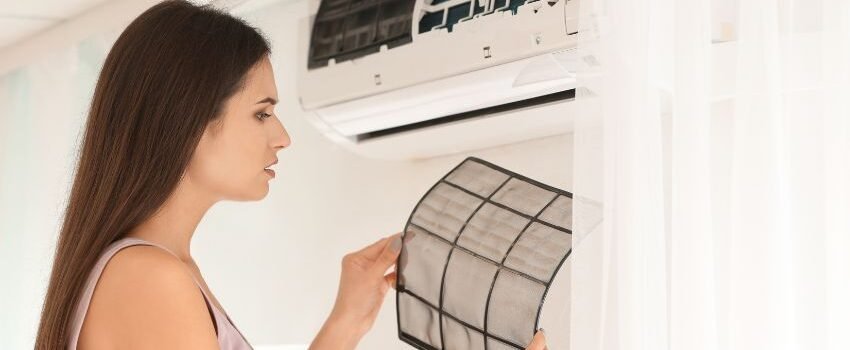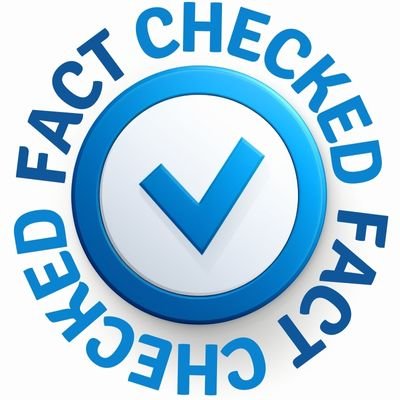Why is My AC Not Working? Causes and Fixes

Published July 28, 2023
It can be really annoying when you’re comfortably sleeping, and the AC suddenly stops working. Or if you go home on a very hot day, turn on the AC and then be greeted by a stream of warm air.
If you’ve ever been in this situation, you’ve probably wondered, “why is my AC not working?”.
As it turns out, there are many reasons why air conditioning systems stop working. Sometimes, it’s just as simple as forgetting to plug it into an electrical source. But at times, it can be due to complicated technical issues that only professionals can fix.
To help you get comfortable again, we’re listing down some of the most probable reasons why your AC doesn’t work anymore and what you can do about it.
Possible Reasons Why Your AC Is Not Working
In most cases, your AC system isn’t working because:
1. You forgot to turn it on.
This is one of the most common reasons ACs don’t work. It usually happens when you’ve been away for a long time and forgot to turn the unit back on.
2. Your air filter is dirty.
As their name suggests, air filters block dust, dirt, pollen, and other small particles from getting into your AC’s internal components. If too much grease and grime accumulate on your air filter, it can restrict and affect airflow. As a result, your AC has to work over time. This makes it more prone to breakdowns and short cycling (shorter bursts of cooling cycle).
Common signs that your air filter is dirty:
- there is accumulated dirt in the filter
- your home is not as cold as it used to be
- you’re having allergy symptoms
- dust is accumulating around your home and air vents
- the surface of your AC is hot to the touch
- there’s a strange burning smell combined with mold and mildew coming from your HVAC unit

3. The vents are blocked.
HVACs have indoor vents and exhaust vents. Indoor vents direct cooled air into the room, while exhaust vents expel warm air. When these vents are blocked, your AC will have a hard time doing its job. It cannot expel warm air or supply enough cold air.
Accumulated dust and dirt are the most common culprits of clogged vents. Though, sometimes, it can also be due to small toys, furniture, or closed dampers.
Common signs that your vents are blocked:
- your air filters are clogged even if you’ve just replaced them
- strange smell emanating from the vents
- presence of mold and mildew around your vent covers and the AC itself
- pest infestation in your air ducts
- strange noises are coming from your vents
4. The thermostat is broken.
Sometimes, your AC isn’t cooling off your room as it used to because your thermostat isn’t set properly or is broken. If it’s set to heat, you can’t expect cold air to flow out of it. Or if it’s broken, your room temp will remain the same no matter how many times you change the temperature setting.
Common signs that your thermostat is broken:
- the temperature keeps rising or going down nonstop
- varying temperatures throughout the house
- the unit is not turning on despite having no electrical issues
- programmed settings aren’t retained
5. Your capacitor needs replacement.
Capacitors provide your AC with the initial jolt of electricity it needs to kickstart the cooling cycle. If it’s broken or has reached the end of its useful life, your AC won’t be able to start or function successfully.
Common signs that your capacitor needs replacement:
- there’s a strange humming noise coming from the unit itself
- a strange burning smell from inside the AC
- your AC isn’t blowing cold air
- your energy bill is spiking
6. An internal component has come loose.
All of your AC’s internal components – from the fan to the smallest screw – are there for a reason. If any of those come loose, it can obviously affect your AC’s performance. Depending on the part/s affected, your AC will most likely have cooling issues or stop working altogether.
Common signs that internal components have come loose:
- a jingling or rattling sound inside your AC
- poor/weak airflow
- burning smell coming from inside your unit
7. The coolant has run low.
Also known as refrigerants, coolants are a staple in most HVAC systems. Most people also call this “freon,” after the most popular brand of coolant. It runs through the inside coils of your AC and cools down the air passing through them.
Since your AC coils are in a closed loop, the coolants can run through them indefinitely. However, when there are holes or cracks in your coils, the coolant can leak out. When the coolant runs low, your AC won’t be able to produce cold air.
You’ll usually notice these signs if your AC is running out of freon:
- your power bill is higher than usual
- your unit is expelling warm air
- ice is starting to build on your ACs copper coils
- hissing or bubbling sound from your AC
8. Electrical issues
Circuit breaker issues, wiring problems, and poor power supply can all cause electrical issues in your unit. This is especially true for residential HVAC systems since they have a different wiring system than most types of AC.
If your unit is suffering from electrical issues, it will:
- have trouble turning on or starting up
- keep turning on and off in short intervals
- emit a burning smell
9. Burnt out fan motor
The fan motor powers the fan that circulates the air throughout your home. Without it, your AC would basically just be a fancy metal box taking up space on the wall. Not doing regular checkups, running the AC too much, or without power protectors can make the fan motor stop working.
If you start noticing the following, they could be signs that your fan motor is toast:
- a humming sound, but the fan isn’t spinning
- a burning smell or smoke coming from the unit
- little to no airflow
10. The blower belt is broken.
The blower belt is essentially the muscle behind your HVAC’s operation. It connects the motor to the fan blades so they can turn and blow cool air into your home. Think of it like a runner’s leg muscles – without the belt, the motor would have a hard time getting the blades to spin, and your AC would be rendered useless.
This usually happens when:
- the belt is too tight or too loose
- there are frequent movements that jostle the blower belt enough to cause it to snap
- the belt has weakened due to regular wear and tear
Some of the most common signs that your blower belt is broken include:
- little to no airflow coming from the vents
- grinding or high-pitched noises from the blower
- overheated vents
- burning smell
- the circuit breaker keeps tripping
What to Do Before Calling a Technician
Most causes of air conditioning malfunction require professional intervention. But in some cases, you can fix the issue yourself. So before calling a technician, try doing these first:
1. Check if your unit is plugged in.
As I said, your AC won’t function if it’s not plugged in to a power source. If your unit is not turning on, no matter how many buttons you press, check the power source first.
2. Check if there are any power interruptions.
Obviously, your AC won’t function if there’s a power interruption. Florida is especially prone to these interruptions as the state reportedly gets an average of 51 to 100 outages a year.
Look at other electric-powered devices around you. If none of them is working, chances are there’s a power outage in your area, or your electricity was cut off.
3. Check your thermostat.
If your AC is on, but the room is still hot, you can try to check your thermostat. There are times when there’s really nothing wrong with your AC. You just didn’t properly set your thermostat.
Besides, thermostats come in different types: programmable, non-programmable, smart, and wifi-powered. They all require different configurations. Confusing one over the other could lead to incorrect configurations and a sauna-like room.
First, check what type of thermostat your AC has. You can also check the manuals if they’re not familiar. Then make sure it’s properly set to your preferred temperature.
4. Restart your unit.
Most digital appliances need a reset from time to time. Your AC specially needs a reset when the protection in the circuit breaker kicks in. This usually happens after a power outage or if the unit was unplugged without being turned off.
There are several ways to reset your AC, depending on your unit. You can:
- Use the reset button. Most modern HVAC systems have reset buttons, typically found in the outdoor units. Make sure that there’s enough energy flowing through the AC before pressing the reset button to avoid electrical issues.
- Reset your circuit breaker. If your unit has no reset button, you can reset the circuit breaker instead. They’re usually found in the basement or in crawlspaces. Look for the switch labeled AC and turn it on. Or if there’s no label, simply look for the switch in a neutral position. Then try turning on your AC to see if you flicked the right switch.
5. Replace your air filters.
When was the last time you changed your air filter? If you can’t remember, it’s probably time to get on it. Luckily, changing an air filter is an easy task that won’t take up too much of your time.
Here’s how to do it:
- Turn off your AC entirely.
- Find where your filter is located. In most units, they’re near the return air duct or the air handler.
- Take the old one out and pop in the new one. Make sure it’s facing the right way.
- Turn your AC back on.
Ideally, you should change your air filter every 6 months. You can also use the white sheet test to check if your air filter needs replacing. Just hang a white sheet a few inches from your vents. If there are black or gray soot in the sheet after a few hours, you need to change your filter ASAP.
When to Call a Technician
If your AC still doesn’t work after doing the troubleshoots listed above or if you’re not sure what’s wrong with your AC, it’s time to call a technician.
Aircon technicians have the skills and knowledge to find and fix problems with your air conditioner. They can also help you save money by fixing it instead of buying a new one. Besides, HVAC systems can be sensitive and fragile. Cutting the wrong wire or resetting it too soon can cause even more damage. Trust me, you won’t want to make that mistake.

This Content Is Fact Checked
This content has undergone thorough fact-checking by our team of internal experts. Gain further insight into the editorial standards upheld on our website here.
South Florida HVAC Professionals
Snowflakes Air Conditioning has been providing professional HVAC services for over 10 years. We are committed to keeping your air conditioner running smoothly all year round. Our experienced technicians can handle anything from AC repair to sales and AC installation. Whether it’s time for an upgrade or just regular upkeep, we are a name you can trust for your HVAC needs. Contact us today for more information.

About The Author
Judy Ponio is a professional writer for the Snowflakes Air Conditioning website and blog. Her vast experience crafting helpful articles on topics related to HVAC will help you make better decisions for your home or business.



